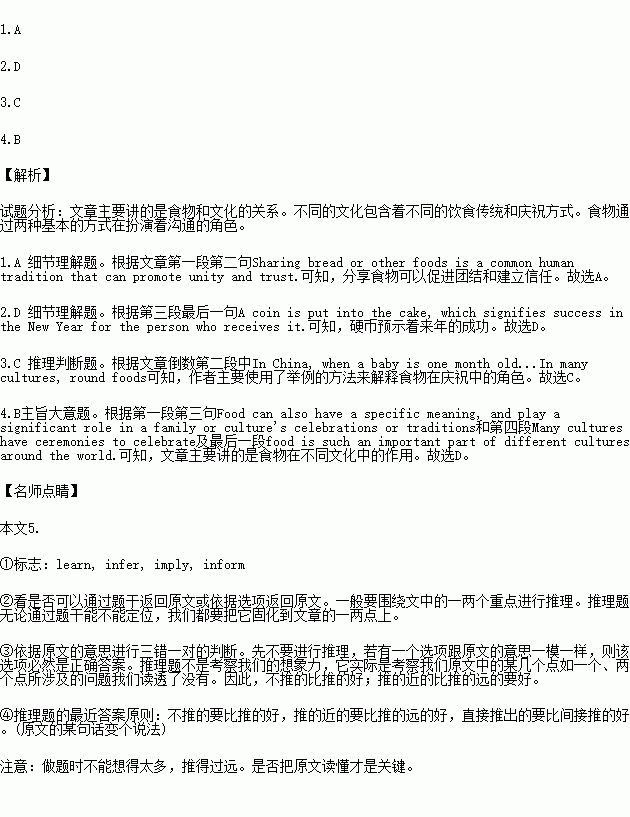题目内容
Food serves as a form of communication in two fundamental ways. Sharing bread or other foods is a common human tradition that can promote unity and trust. Food can also have a specific meaning, and play a significant role in a family or culture's celebrations or traditions. The foods we eat—and when and how we eat them—are often unique to a particular culture or may even differ between rural and urban areas within one country.
Sharing bread, whether during a special occasion or at the family dinner table, is a common symbol of togetherness. Many cultures also celebrate birthdays and marriages with cakes that are cut and shared among the guests. Early forms of cake were simply a kind of bread, so this tradition has its roots in the custom of sharing bread.
Food also plays an important role in many New Year celebrations. In the southern United States, pieces of corn bread represent blocks of gold for prosperity in the New Year. In Greece, people share a special cake called vasilopita. A coin is put into the cake, which signifies success in the New Year for the person who receives it.
Many cultures have ceremonies to celebrate the birth of a child, and food can play a significant role. In China, when a baby is one month old, families name and welcome their child in a celebration that includes giving red-colored eggs to guests. In many cultures, round foods such as grapes, bread, and moon cakes are eaten at welcome celebrations to represent family unity.
Nutrition is necessary for life, so it is not surprising that food is such an important part of different cultures around the world.
1.According to the passage, sharing bread______.
A. can help to develop unity
B. indicates a lack of food
C. is a custom unique to rural areas
D. has its roots in birthday celebrations
2.What does the coin in vasilopita signify for its receiver in the New Year?
A. Trust. B. Togetherness.
C. Health. D. Success.
3.The author explains the role of food in celebrations by______.
A. analyzing causes B. making comparisons
C. using examples D. describing processes
4.What is the passage mainly about?
A. The custom of sharing food.
B. The importance of food in culture.
C. The role of food in ceremonies.
D. The specific meaning of food.
 阅读快车系列答案
阅读快车系列答案
